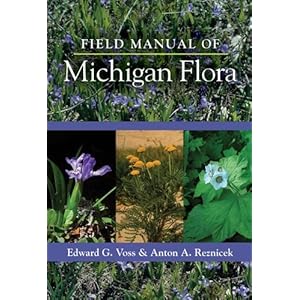One of the most extraordinary people ever to have lived was Charles Clemon Deam, a self-taught botanist from

Just outside his hometown of
 This is the detritus that was under the tree in February, 2012.
This is the detritus that was under the tree in February, 2012.
North of the town square in Bluffton there is a street named “



In addition to being a phenomenal botanist, state forester, and manager of his own herbarium and arboretum, Deam was a drugstore owner. His store was located at


 Sadly, renovation has hidden all traces of his store, with the bank on the corner and his drugstore now both included in the Wells-Fargo Bank that occupies most of the block
Sadly, renovation has hidden all traces of his store, with the bank on the corner and his drugstore now both included in the Wells-Fargo Bank that occupies most of the block

Deam’s prosperous and productive life spanned nearly a century: he lived from 1865 to 1953. His influence on

The legendary Floyd Swink of
On a recent visit to my local library (sometime in the fall of 2010), I was walking past the magazine racks and there was Charles Deam on the cover of the "Traces," a magazine published by the Indiana Historical Society. The article inside was very nicely written, and there were a few more pictures of Mr. Deam that I had not seen before.
When I was in college at
At the end of my recent Bluffton visit, I stopped for a sandwich as I was heading out of town. Three young people (maybe mid-20’s) were working, and I asked if they knew who Charles Deam was. One of them replied, “
In conclusion, here are a few of my favorite Charlie Deam quotes, in no particular order:
“It is the little things we can do for others that makes life worth while.”
“I do hate a lazy person. A lazy person ordinarily is a liar and a thief, too.”
“I shall never forget my toughest day. I started down a newly graded road (all roads unknown to me at that early date) of 4 miles. In the 4 miles I had to change tires three times. Inner tubes in those days were very poor quality. It was in the fall of the year with a strong wind and drizzling rain. I was from about 9:00 A.M. until dark making the 4 miles and I doubt if a single vehicle passed me that day…. I wanted to get off this road and when I did I drove into a woods and the car scarcely got over the side ditch when I was “in” to the hubs. So I just camped there that night but I did get out my stove and make some coffee to help me get down my bread and peanut butter.”
“…I got well in spite of the M.D’s.”
“…I have spent all my time on something I consider worthwhile. In so doing you meet a lot of opposition.“
“We have too many dishonest and ignorant men in political places.”
“The
“Old General Debility will give the commands, and believe me, you will obey.”
“I understand they are strongly recommending now that all the old cemeteries be planted with multiflora rose. When Gabriel sounds his horn, I am afraid some will be stranded and not be able to get thru the roses. Please do not recommend the multiflora rose except for the bonfire.”
“Friesner, you collect grasses like a cow.”
“…I did my darnedest, and in it you have my measure.”
“I am just plain ol' Charlie Deam and I never want anyone to think anything else.”












